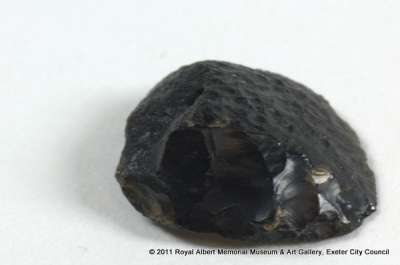Scraper
The idea of rocks falling from outer space can get people very excited. These fascinating messengers from the sky can give us information about the age of the solar system, and the formation of planets and the asteroid belt from which they came. Most small meteorites burn up in the Earth's atmosphere and we see them as shooting stars, but the larger ones will hit the Earth at tremendous speed. When they impact the Earth they can leave large craters.
A less well known result of meteor impacts are tektites. Tektites, from the Greek 'tektos' meaning molten are usually dark glassy objects that are believed to have been melted from the Earth's crust when major meteorites impacted the Earth. This molten rock was then thrown up into a sub-orbital trajectory before falling back to Earth.
We know of four 'strewn fields' of tektites. Three of these fields are associated with known meteorite craters. However, the most extensive, which covers parts of Indonesia and Australia, does not have a known source.
This is one of a set of 6 tektites. 4 are in their natural shape which was caused mainly by its re-entry through the Earth’s atmosphere. The Aborigines flaked two of them (including this one) to form tiny tools. All are about a centimetre in diameter. They were collected by army engineer in the Nullarbor region of South Australia in 1962 (hence the local name 'Australites'). They are probably around 700,000 years old.
A less well known result of meteor impacts are tektites. Tektites, from the Greek 'tektos' meaning molten are usually dark glassy objects that are believed to have been melted from the Earth's crust when major meteorites impacted the Earth. This molten rock was then thrown up into a sub-orbital trajectory before falling back to Earth.
We know of four 'strewn fields' of tektites. Three of these fields are associated with known meteorite craters. However, the most extensive, which covers parts of Indonesia and Australia, does not have a known source.
This is one of a set of 6 tektites. 4 are in their natural shape which was caused mainly by its re-entry through the Earth’s atmosphere. The Aborigines flaked two of them (including this one) to form tiny tools. All are about a centimetre in diameter. They were collected by army engineer in the Nullarbor region of South Australia in 1962 (hence the local name 'Australites'). They are probably around 700,000 years old.
Object Summary
- Accession Loan No.
- 22/2011/5
- Category
- Ethnography
- Collection Class
- Tools for farm and craft
- Collection Area Region
- S
- Collector Excavator
- Blakeway, B
- Common Name
- scraper
- Simple Name
- tektite
- Production Town
- Watson & Ooldea, nr. Maralinga
- Production County
- Nullarbor region, South Australia
- Production Country
- Australia


